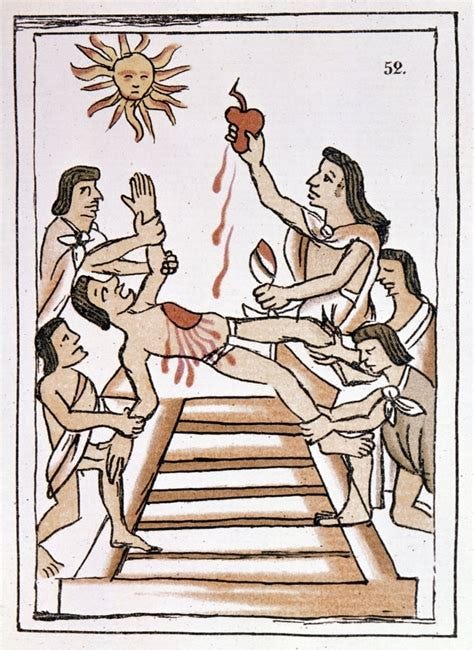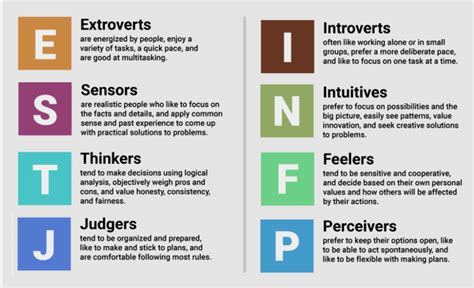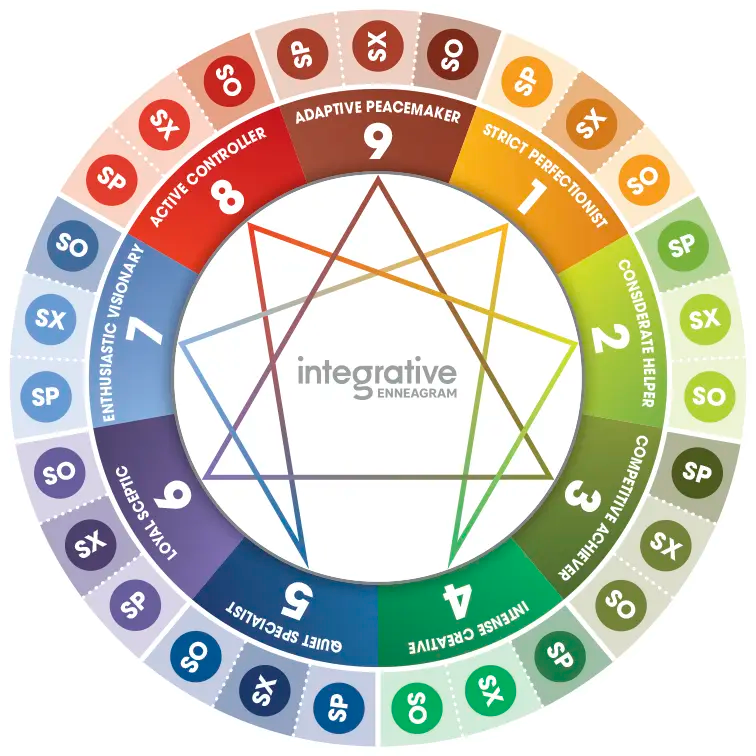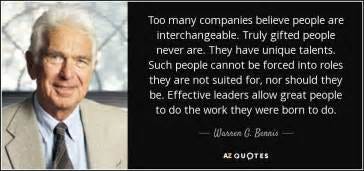Interchangeable Roles of Victims, Enablers, Enforcers, and Saviors in the Globalist Game against Mankind
Addiction and Human Nature explain the proceedings
Sorry, I don’t know who Rondo is, but the quote applies, no matter what. The actual problem is, do the roles, elected or mandated, define who one is?
The nature of addiction, when examined from up close without thinking in a box, reveals a whole lot about how people can be lured into self-harm or even self-extermination, which happens to addicts as well as to the participants of the globalist game against humanity. People are drawn into the game by assuming roles that serve their self-importance, and in addition, the game offers dynamic versatility to the extent that one can never get bored of it.
To me, the nature of addiction provides several clues to the mystery of people volunteering to participate in their own slaughter. Let me start with referring to an animal experiment about addiction.
Many people might assume the psychologists use primates for emulating human behavior, but the assumption is tragically wrong: rats are better subjects to accomplish the task. How do rats behave, when exposed to addictive substances?
What is known about addiction?
Whatever is “scientifically” known about anything largely depends on the source from which the “scientist” receives their income. That premise alone defies the foundations of even the simplest “science,” but that’s not what this article will cover; I’ve written about the subject often enough.
During my 23 years of academic teaching, I usually asked my students to raise their hands, if they were not addicted to anything. About one in 30 students did that, and I am still not sure, if they understood the question, and I cannot blame them, because definitions for “addiction” vary and tend to be unconvincing. Definitions are never right or wrong; their veracity depends on the problem-solving system in which they are summoned.
As a side note, I can’t help mentioning that those who define addiction are usually involved in processing it “scientifically” or institutionally. Addiction is a kind of dependency for sure, which can happen in human relationships, too, when the functionality and/or performance of one party depends on another’s functionality and/or performance. The casual term for that is “condependency,” which tends to be rejected by psychologists/psychiatrists for some reason, who, by the way, could be accused of depending on their clients for their income, and their clients also depend on them, often only because they want someone else to do the job of “saving” themselves (and the smarter ones are only going for a disability pension, because they know that the “experts” cannot cure or even properly diagnose anyone). Curing them can be out of the question from the “professional” point of view, too, because that would leave the practitioner without a revenue1.
In the last 35 years, I theorized that addiction is based on the addict’s setting up a repeatable segmented experience during which the mind isolates a predictable chunk of the cognitive process to which the addict succumbs and due to be repeatability of the process, the addict can feel to be in control. After all, it usually doesn’t make much difference what happens out there; what and how the person who processes out of his or her experience presides over externalities.
The experiment with rats and addiction contributes to my original idea2:
“Put a rat in a cage and give it 2 water bottles. One is just water and one is water laced with heroin or cocaine. The rat will almost always prefer the drugged water and almost always kill itself in a couple of weeks. That is our theory of addiction.
Bruce comes along in the ’70s and said, “Well, hang on. We’re putting the rat in an empty cage. It has nothing to do. Let’s try this a bit differently.” So he built Rat Park, and Rat Park is like heaven for rats. Everything a rat could want is in Rat Park. Lovely food. Lots of sex. Other rats to befriend. Colored balls. Plus both water bottles, one with water and one with drugged water. But here’s what's fascinating: In Rat Park, they don’t like the drugged water. They hardly use it. None of them overdose. None of them use in a way that looks like compulsion or addiction. What Bruce did shows that both the right-wing and left-wing theories of addiction are wrong. The right-wing theory is that it’s a moral failing, you’re a hedonist, you party too hard. The left-wing theory is that it takes you over, your brain is hijacked. Bruce says it’s not your morality, it’s not your brain; it’s your cage. Addiction is largely an adaptation to your environment.
Now, we created a society where significant numbers of us can’t bear to be present in our lives without being on something, drink, drugs, sex, shopping... We’ve created a hyperconsumerist, hyperindividualist, isolated world that is, for many of us, more like the first cage than the bonded, connected cages we need.
The opposite of addiction is not sobriety. The opposite of addiction is connection. And our whole society, the engine of it, is geared toward making us connect with things not people. You are not a good consumer citizen if you spend your time bonding with the people around you and not stuff. In fact, we are trained from a young age to focus our hopes, dreams, and ambitions on things to buy and consume. Drug addiction is a subset of that.
During the plandemic, anti-social distancing was meant to disrupt human communication, just like muzzling created divisions among friends and family.
I have also pointed out that there is one thing anyone can do against tyranny:
https://rayhorvaththesource.substack.com/p/the-most-important-thing-anyone-can
Of course, you don’t have to be caged to be an addict but, in a way, everybody must live within their confines, which can be easily experienced as a “cage.” Living among other people imposes severe restrictions on everyone to the point that realizing your potentials is hardly ever possible. It’s not an accident that some of the most fantastically well-meaning and intelligent people I’ve known subsisted on desensitizers to dull the pain of being alive and sometimes on psychotropics in order to expand the cage by drug-induced imagination.
The addiction to dying: a culture of necrophiliacs
Dies Irae: The Day of Wrath
Musically expressed in one of the most fantastic pieces of music ever written, Mozart’s mass for the dead:
People are fascinated and enchanted by death:
The Sacrifice of the Human Animal
The events that attracted the highest number of spectators in history were… well, you may have guessed, public executions. There is something weird and sick about most humans; they WANT to be mesmerized by death and suffering. On Substack, some of the most popular sites thrive on not much else but on showing faces of people, many of them young and beaut…
Can addiction target happiness?
Happiness is often envisioned as a condition. It is not. It is a process that keeps changing, and it always involves a personal intent and a public outcome. It is like riding on a wave towards a distant shore that only those who persevere will reach, but nobody has seen. Here is an intriguing description:
https://www.pursuit-of-happiness.org/history-of-happiness/mihaly-csikszentmihalyi/
Material gains, including sensory indulgence, result only in obsession.
Here is a joke about obsessive behavior.
This guy is there in the desert for weeks. His only companion is a camel. His libido is too much for his age, and he starts considering the camel. It takes him weeks, but eventually, he makes friends with the idea, so he pulls his pants down and stands behind the camel. The camel steps aside. Again, he walks behind the camel, but the camel walks a little bit away. This keeps going on for months. Finally, a gorgeous white blond (according to worldwide inquiries, those are the most attractive for all races, but it’s probably enough to ask the Swedish or the Germans about their experience since 2015) shows up, stark naked. She puts her arm around our man and says,
“I’ll fulfill all your wishes. What do you want?”
The man’s response is,
“Hold that camel!”
It’s important to observe that without a sense of continuity, people can go insane, which is just about the only thing psychologists managed to agree on around 1978, besides the fact that hearing out a patient works3.
Obsession, however, leads to the need for overstimulation. Children who start having sex around the age of 15, lose their interest by the time they turn 30, unless they choose to go further and enter the realm of the criminally-insane, which is what seems to have been happening to the adrenochrome-harvesting “elite.” Well, harvesting adrenochrome might be thing of the past, unless it’s harvested in Satanic rituals, and I don’t think that Satanism is anything more than a red herring for the masses.
Happiness?
Happiness has nothing to do with being content. On the contrary: it is a fire, burning with desire to explore the confines of human existence. It has nothing to do with “being positive,” because it involves faith and responsibility. It is not a feeling, because serving what is right sometimes sucks. It is fuel towards a destination, but it is only a means to that end.
Feeling safe and satisfied only puts out the fire, but the observant are aware that safety doesn’t exist in this world and being satisfied doesn’t comply with human nature.
How about being bad?
Prometheus stole the secret of fire from the gods, and gave it to humans, for which he is being punished
Revolting against the natural order of things is the Promethean adventure and you might also label it the Original Sin. It provides pride and even integrity for those who choose to take the path, which seems to include the whole of mankind.
According to some, “being different” from the herd is also desired, because how else can one be exceptional? That belief leads directly into the bottomless pit of a satanist persuasion, because nobody can do it all alone. Evil people allying themselves with other evil people carries an irreconcilable contradiction: there is no room left for trusting in each other, because they can turn on each other anytime. And they inevitably do.
In Tibetan tradition, evil is defined as selfish. In many oral cultures that precede the stage of literacy, evil, stupid, and ridiculous go hand-in-hand, and are sometimes denoted by the same word. Individualistic cultures go back at least to ancient Greece. They were tribal at first, belonged to a monarch next, and ended up in the mythology of a nation. Humans need somewhere to belong, even if the principle is as imaginary as a nation-state.
There seems to be a contradiction here: in order to be evil, one must assume to be superior, and all traditional cultures possess the self-preserving feature of considering themselves better than their counterparts. The globalists certainly look down on the rest of humanity with a special kind of disgust and detestation that, sadly, even proves justified more often than not, especially when the inferior folks end up behaving as stupidly as expected or, shall I say, “required”? The globalist parasites objectify their victims and their slaves, considering them no better than redundant or dangerous insects, which is perhaps one of the reasons why they want commoners to eat bugs and worms as some convoluted manifestation of cannibalism.
The necessity of continuity
In 1978, a study of several hundred psychological theories found that psychologists can agree only on two tenets:
It is therapeutic to hear out a patient;
Those, whose sense of identity becomes disrupted, lose their mind (of course, it may be the other way around, but determining causality has never been a forte of Psychology or Psychiatry).
The second statement suggests that people adhere to their previous decisions even if they could easily recognize they were wrong, because they prefer to retain their assumed sanity. Indeed, the strongest motivation I’ve ever seen in humans is what I call “running after my money.” People who have invested too much time, energy, and other resources into something, have a hard time giving it up. Scientology, Ponzi schemes and the like thrive on this characteristic of human nature. In a way, sticking to anything that can be easily proven wrong, is a form of addiction.
Still, many people can’t stand silence, because they don’t feel comfortable in their own company. Who are those people? Do they choose to change roles at their own whim or are they manipulated into roles from which they select, but end up destroying themselves irrespective of their selections?
Addicts are tolerated or even highly respected
Computer games isolate a segment of the person’s experience that is predictable and it carries an amount of user control that far exceeds the control the same person can impose over his/her own life. Escaping from the responsibility of having to make decisions is also removed by a single decision: join the game (practice the addiction).
Although Brits couldn’t stand Churchill in the old pervert boozer at the time, he was transformed into a hero by the same dominant forces that supported Stalin, and nobody cares that Stalin killed a lot more people than Hitler (whose demonization also seems to be manipulated by movies, “history” books, and “laws” more than by facts). Churchill was actually a fully-detestable globalist agent, imbibing on the Rotschield’s $40 a bottle champagne until he kicked the bucket… History brokers, just like your government, have been lying to you, and it doesn’t look like they are going to kick the habit anytime soon. After all, the lies are canonized in “education,” mandated in exams, and often enforced by “law” and most often, by other victims who have fallen for the lies.
Boozing has its rewards
Booze dissolves inhibitions. As opposed to “professional” opinions, egocentrism is human nature, not merely an addict’s shortcoming. Inhibition, however, can turn into grandiose feelings under the influence, ranging from “histrionic” to “narcissistic,” but that cannot be maintained without making the stupor as permanent as possible.
Substance abuse usually has two stages, which are never mentioned, but which I happen to know from experience in my “hood” in my childhood (where many people drank themselves to death) as well as from my time as a volunteer at the mental ward at a V. A.: material and psychological dependency. Kicking the first one induces powerful withdrawal symptoms, which means that for strong addicts, it’s a bad idea to go cold turkey without supervision. The second stage can be a lot more difficult to abandon, but stopping doesn’t come with physical withdrawal symptoms any longer. At that stage, the “addict” can choose between behaviors that (s)he finds the most rewarding.
Is being prone to addiction genetic or a result of early-childhood conditioning (“primary socialization”)? Genetic memory does exist, and one tends to follow the same path as their ancestors, which is glaringly obvious in metabolism: eating the same amount and the same diet as one’s predecessors is a safe bet for everyone (although it’s unlikely to be available now). Still, innate tendencies don’t exclude the option of following patterns encountered in one’s early years (before the age of five), when everything is taken for granted, and one’s “conscience” is formed. Twin studies don’t prove that boozing is an acquired behavior, because separated twins tend to follow the same path even when they hear nothing about their sibling for several years or decades.
Addiction is never a solitary pastime: I hate typologies
Psychology is at its worst, when it develops “personality types.” The Myers-Briggs seems to be popular:
I hate typologies, because they masquerade as signs of expertise, while they only provide frameworks for lazy problem-solvers. Notice that no matter how fancy the “types” are, they are all meant to appeal to you, no matter which of them you agree to be, which resembles coffeehouse astrologists, at best. Let me make it a bit more obvious:
The very absurdity of the categories insults my intelligence or at least whatever is left of it at my age. These are normal human activities and they are used as needed, so their dominance mostly depends on which of these the person’s environment calls for in problem-solving situations, so the more common a type of problem is, the more likely “you” are going to be a “type.”
Can it be done any better?
A typology can become more convincing, if it mimics the reality of constant change, but such typologies don’t exactly abound among “professionals.”
The state of addiction seems to be the normal state of humans, whose need for structured experience that offers a reasonable level of control overrides the need for “the truth.” Dependency, when a culture or an environment condones its objective, becomes a form of “dedication” or “commitment.”
No matter how long “experts” psychoanalyze “addiction,” the only tenable and intelligent description of at least certain occurrences of the process is in Eric Berne’s Games People Play, in which roles are assumed by the players in order to substitute for intimacy (which might be impossible or undesirable to target or achieve under some circumstances). Berne ingeniously ridicules Alcoholics Anonymous as well by showing that if the “saved” addict can relapse anytime for no apparent reason other than the connection between the players being disrupted. Here is the part from his book (starting at p. 59 in the PDF download, but the whole book is well worth reading4):
Thesis. In game analysis there is no such thing as alcoholism or ‘an alcoholic’, but there is a role called the Alcoholic in a certain type of game. If a biochemical or physiological abnormality is the prime mover in excessive drinking – and that is still open to some question – then its study belongs in the field of internal medicine. Game analysis is interested in something quite different – the kinds of social transactions that are related to such excesses.
Hence the game ‘Alcoholic’.
In its full flower this is a five-handed game, although the roles may be condensed so that it starts off and terminates as a two-handed one. The central role is that of the Alcoholic – the one who is ‘it’ – played by White. The chief supporting role is that of Persecutor, typically played by a member of the opposite sex, usually the spouse. The third role is that of Rescuer, usually played by someone of the same sex, often the good family doctor who is interested in the patient and also in drinking problems. In the classical situation the doctor successfully rescues the alcoholic from his habit. After White has not taken a drink for six months they congratulate each other. The following day White is found in the gutter.
The fourth role is that of the Patsy, or Dummy. In literature this is played by the delicatessen man who extends credit to White, gives him a sandwich on the cuff and perhaps a cup of coffee, without either persecuting him or trying to rescue him. In life this is more frequently played by White’s mother, who gives him money and often sympathizes with him about the wife who does not understand him. In this aspect of the game, White is required to account in some plausible way for his need for money – by some project in which both pretend to believe, although they know what he is really going to spend most of the money for. Sometimes the Patsy slides over into another role, which is a helpful but not essential one: the Agitator, the ‘good guy’ who offers supplies without even being asked for them: ‘Come have a drink with me (and you will go downhill faster).’
The ancillary professional in all drinking games is the bartender or liquor clerk. In the game ‘Alcoholic’ he plays the fifth role, the Connexion, the direct source of supply who also understands alcoholic talk, and who in a way is the most meaningful person in the life of any addict. The difference between the Connexion and the other players is the difference between professionals and amateurs in any game: the professional knows when to stop. At a certain point a good bartender refuses to serve the Alcoholic, who is then left without any supplies unless he can locate a more indulgent Connexion.
For this game, the roles can be switched around, which is particularly satisfying. Something like this was going on during the convid theater, where the Victim, the Torturer, and the Rescuer was easily a single person, albeit rarely all at once. The roles were flexible, and the same person was able to play multiple roles, depending on the circles of people in which (s)he participated. Even the same role could mean exactly the opposite, depending on the player’s dedication and affiliations.
During the plandemic, everybody was a potential victim and a potential rescuer, and the saviors varied. For some, the Rescuer was Fuxxi, for others, it was a politician, a Dr. Whoever, another “scientist,” a whistleblower or some other kind of “truth-teller.” Obviously, the game is still going on, and many people cannot break free from it.
The common denominator among these players is that the people are declared to be helpless, which those who refuse to take responsibility for their own decisions even believe. They are hell-bent on finding a rescuer who are either as fake as the plandemic or as powerless as the victims themselves. Being a “doctor” or a nurse, may have put the participants into the role of an executioner, a savior, a victim, or a dummy. The smartest players use compartmentalization (and feel superior over the “trash” that believes them) or assign the rest of the job to their folk heroes (e.g. Trump or RFK, Jr.).
The Victim’s role itself can vary: some believe they are infected by a “virus,” (which is a diversion from the point that usurpers are exercising power over the people) others believe it’s all the fault of the injected or the uninjected, and the most observant ones realize they are victims of a globalist scheme.
Some people, no matter how powerless they might be, declare themselves (or someone else whom they are planning to make responsible for their own decisions) to be saviors, mostly by “telling the truth,” although that sort of thing has never made a difference in history. Only those in power can change things, and they change things only if they can be convinced that specific changes would be advantageous for them, as it happened when Confucian meritocracy was introduced in China 2,500 years ago or during the proliferation of denominations during the period of Reformation in Christianity, although the latter didn’t last long before bankers took control of countries and economies by about 1700.
Being able to switch between roles makes the game self-empowering, entertaining, and addictive. The addictive pattern comes from the isolation of a segment of personal experience, where the person enjoys cognitive security (because everything is predictable), a sense of victimhood, or a real or imaginary role of one in power.
A DYNAMIC PERSONALITY MODEL?
Eric Berne’s more-or-less proven behaviorist setup of a game in which matching roles can be selected by everyone interested or forced to participate still applies, but Berne’s model, no matter how ingenious it is, doesn’t predict role changes. The only feasible dynamic “personality” model I have ever encountered is described in the Enneagram (for further details, click on the word), according to which various personality types keep switching between specific states of mind that, as a result of the person’s behavior, automatically progress the next state of mind in an endless loop.
The Enneagram (for a slightly different perspective, visit this page: https://www.forbes.com/health/mind/enneagram-types/) comes from traditions from areas in Afghanistan, and Jesuits “translated” it into Christian terms and concepts, and suggested that all personality types have a “doomed” and a “redeemed” path to follow. Theoretically, the dolphin that represents me besides the Kentuckian mule, is the animal of my “redeemed” self. I suspect I’m much closer to the mule, and I have no idea how he fares in the typology. I am not going to tell you if it’s right or wrong, but I consider it mostly as a source of entertainment.
Can bosses allow a worker to be smarter than they are? Also, the most important gifts are not for sale.
I am not even claiming that all of them are malicious, but they are all certainly keeping their “protocol,” without which most of them would be out of a job or even endanger their licenses…
Sources: SOURCES:
https://serenityatsummit.com/news/overview-rat-park-addiction-study/
https://exploringyourmind.com/the-rat-park-experiment/
https://healingproperties.org/rat-park-addiction/
https://curioussciencewriters.org/articles/2022/01/31/what-can-rats-teach-us-about-addiction/
https://www.sapience.earth/voices-around-the-fire/bruce-alexander-rat-park
I also assume that the so-called “midlife crisis” is closely linked to this elemental human need; one MUST perceive themselves as the same all their lives.
As a professor in higher education in the US and in Europe, I usually told students that I would never graduate anyone, no matter what discipline they follow, unless they read AND understand games.














An amazing compilation of discovery here for all to digest. In my quiet time this morning the self examination is drinking in many of these points you bring up Ray. I am savoring the whole of it and snacking on the parts. Very important piece you’ve put out here. I read last night and went out and sat in the grass at dusk for a good bit of time as the moon rose and sun set. The lighting bugs made a lovely show.
I will be re reading this with myself in the mirror.
Grateful for your insights 💕
At 67, a past drunk 30 some years ago I can say this: I can be just as stupid as my drunk past persona, I am responsible for the effort, but not the outcome and I leave the figurative door open to past room I will not go into! Imagine what is in the closet!(lol)
It works for me.
I will add this, there is always a Strong motivation needed for real change, real change like sobriety one day at a time.
And what might that be? Someone I dearly love, (and 2 beautiful children)saying I’m done with your bullshit and meaning it. She figured me out. She went to alanon and got the right information. She gave me a last chance. I made the only decision that made sense.
Since then, my life resumed as fate would determine.
I am alive healthily living striving to be as conscious as possible of life as we can perceive moment by moment.
Mainly avoiding the matrix thinking, by asking myself “ is this my organic thought “?
Happiness is achieved when distractions are set aside and the goal is achieved.
My take. Distractions are many and nevertheless always present. Hey, a distraction could bring more happiness, like walking down a trail with a destination but something says go this way instead…